
The Game Boy Advance (GBA) is a 32-bit handheld game console developed, manufactured and marketed by Nintendo as the successor to the Game Boy Color. It was released in Japan on March 21, 2001, in North America on June 11, 2001, in the PAL region on June 22, 2001, and in mainland China as iQue Game Boy Advance on June 8, 2004. The GBA is part of the sixth generation of video game consoles. The original model does not have an illuminated screen; Nintendo addressed that with the release of a redesigned model with a frontlit screen, the Game Boy Advance SP, in 2003. A newer revision of the redesign was released in 2005, with a backlit screen. Around the same time, the final redesign, the Game Boy Micro, was released in September 2005.

The Legend of Zelda is a high fantasy action-adventure video game franchise created by Japanese game designers Shigeru Miyamoto and Takashi Tezuka. It is primarily developed and published by Nintendo, although some portable installments and re-releases have been outsourced to Capcom, Vanpool, and Grezzo. The gameplay incorporates action-adventure and elements of action RPG games.

Mario Tennis is a 2000 sports video game developed by Camelot Software Planning and published by Nintendo for the Nintendo 64. Following Mario's Tennis, it is the second game in the Mario Tennis series. The game is known for being the introduction of Luigi's arch-rival, Waluigi, and the re-introduction of Princess Daisy and Birdo.

Perfect Dark is a first-person shooter developed and published by Rare for the Nintendo 64 video game console in 2000. The first game of the Perfect Dark series, it follows Joanna Dark, an agent of the Carrington Institute research centre, as she attempts to stop an extraterrestrial conspiracy by rival corporation dataDyne. The game features a campaign mode where the player must complete a series of levels to progress through the story, as well as a range of multiplayer options, including a co-operative mode and traditional deathmatch settings with computer-controlled bots.
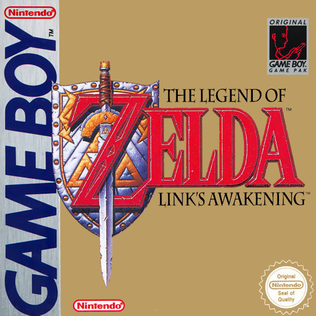
The Legend of Zelda: Link's Awakening is a 1993 action-adventure game developed and published by Nintendo for the Game Boy. It is the first installment in the Legend of Zelda series for a handheld game console. Link's Awakening is one of the few Zelda games not to take place in the land of Hyrule, and it does not feature Princess Zelda or the Triforce relic. Instead, the protagonist Link begins the game stranded on Koholint Island, a place guarded by a whale-like deity called the Wind Fish. Assuming the role of Link, the player fights monsters and solves puzzles while searching for eight musical instruments that will awaken the sleeping Wind Fish and allow him to escape from the island.

The Super Game Boy is a peripheral that allows Game Boy cartridges to be played on a Super Nintendo Entertainment System console. Released in June 1994, it retailed for $59.99 in the United States and £49.99 in the United Kingdom. In South Korea, it is called the Super Mini Comboy and was distributed by Hyundai Electronics.

Pokémon Yellow Version: Special Pikachu Edition, more commonly known as Pokémon Yellow Version or Pokémon Yellow, is a 1998 role-playing video game developed by Game Freak and published by Nintendo for the Game Boy. It is an enhanced version of Pokémon Red and Blue and is part of the first generation of the Pokémon video game series. It was first released in Japan on September 12, 1998, in Australia and North America in 1999 and in Europe in 2000. Along with the release of Pokémon Yellow, a special edition yellow Pokémon-themed Game Boy Color was also released. Pokémon Yellow is loosely based on the anime.
The fifth-generation era refers to computer and video games, video game consoles, and handheld gaming consoles dating from approximately October 4, 1993 to March 23, 2006. For home consoles, the best-selling console was the Sony PlayStation, followed by the Nintendo 64, and then the Sega Saturn. The PlayStation also had a redesigned version, the PSone, which was launched on July 7, 2000.
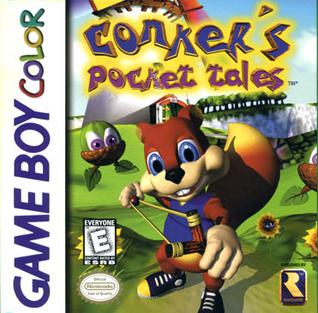
Conker's Pocket Tales is a 1999 action-adventure video game developed and published by Rare for the Game Boy Color. It is the first game in the Conker series and follows the story of Conker the Squirrel as he retrieves his stolen birthday presents and rescues his girlfriend Berri, who has been kidnapped by the Evil Acorn. The cartridge is dual-format, allowing it to also run on the original Game Boy with some gameplay differences.
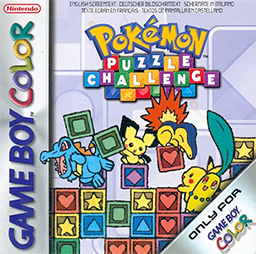
Pokémon Puzzle Challenge is a video game for the Game Boy Color. It is based on Panel de Pon, only with characters from the Pokémon franchise. The characters in Pokémon Puzzle Challenge are based on those in the Gold and Silver games, while those in Pokémon Puzzle League—its Nintendo 64 equivalent—were based more on the anime characters. However, the game is also focused around beating the Johto leaders in a puzzle challenge in Johto region. The game play mode is divided into 1 Player, 2 Player, and Training. The game was later released on the 3DS eShop on November 6, 2014.

Madden NFL 2000 is a football video game. This was the second of the Madden NFL games to not solely feature John Madden on the cover in North America. The only other one was Madden NFL '95. Most versions of the game cover featured Madden prominently in the foreground, and a recognizable Barry Sanders in a background action graphic. The European PAL edition features only Dorsey Levens on the cover.
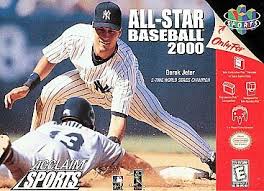
All-Star Baseball 2000 is a video game developed by Iguana Entertainment and Realtime Associates and published by Acclaim Entertainment for the Game Boy Color and the Nintendo 64 in 1999.
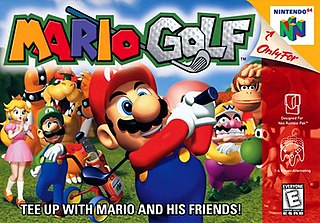
Mario Golf is a 1999 sports game developed by Camelot Software Planning and published by Nintendo for the Nintendo 64. Mario, his friends, and his enemies play golf on a variety of Mario-themed courses. Following NES Open Tournament Golf, it is the second game in the Mario Golf series.

South Park is a first-person shooter video game based on the American animated sitcom of the same name. The game was developed by Iguana Entertainment and published by Acclaim Entertainment for the Nintendo 64 in 1998 for North America and in 1999 for Europe. It was later ported to Microsoft Windows and PlayStation in 1999 for the release year to coincide with the film South Park: Bigger, Longer & Uncut. A Game Boy Color version developed by Crawfish Interactive was in development, but it was eventually canceled due to South Park creators Matt Stone and Trey Parker stating that the game would not be fitting on the Game Boy Color as that console was marketed towards children. However, they did keep a few copies of the Game Boy Color version to commemorate what was originally started as the first South Park game. While the Nintendo 64 version's reception was fairly lukewarm, the PC and PlayStation versions of South Park were panned by critics. A Dreamcast version was planned for a 2000 release but was canceled during development for unknown reasons. In 2018, a ROM image of the Game Boy Color version was leaked online.

The Game Boy is an 8-bit handheld game console developed and manufactured by Nintendo. The first handheld in the Game Boy family, it was first released in Japan on April 21, 1989. The console was released in North America later the same year, then in Europe in late 1990. It was designed by the same team that developed the Game & Watch series of handheld electronic games and several Nintendo Entertainment System games: Satoru Okada, Gunpei Yokoi, and Nintendo Research & Development 1.

Scooby-Doo! Classic Creep Capers is an adventure game published by THQ for the Nintendo 64 and Game Boy Color, based on the Hanna-Barbera cartoon Scooby-Doo, Where Are You!. The Nintendo 64 version, developed by Terraglyph Interactive Studios, was released in November 2000, while the Game Boy Color version was developed by Digital Eclipse Software, and released in February 2001. A PlayStation version, identical to the Nintendo 64 version, had been in development by Terraglyph Interactive Studios but was later cancelled.
This is a list of video game accessories that have been released for the Game Boy handheld console and its successors. Accessories add functionality that the console would otherwise not have.

Perfect Dark is an action video game developed by Rare and released for the Game Boy Color handheld console in 2000. As a direct prequel to its Nintendo 64 counterpart, the game follows agent Joanna Dark as she completes her training at the Carrington Institute research centre and uncovers information against rival corporation dataDyne. The gameplay revolves around shooting opponents and completing objectives such as rescuing hostages or recovering items. The game also includes a multiplayer mode where two players may compete against each other in several deathmatch modes.
Perfect Dark is a science-fiction video game series created by Rare and owned by Xbox Game Studios. It debuted in 2000 with the release of the Nintendo 64 first-person shooter Perfect Dark. The series follows Joanna Dark, an agent of the Carrington Institute agency, as she uncovers conspiracies by rival corporation dataDyne. In addition to video games, the series has expanded into novels and comics. These supplements to the video games have resulted in a significant development of the series' fictional universe.
Nintendo 64 accessories include first-party Nintendo hardware—and third-party hardware, licensed and unlicensed. Nintendo's first-party accessories are mainly transformative system expansions: the 64DD Internet multimedia platform, with a floppy drive, video capture and editor, game building setup, web browser, and online service; the controller plus its own expansions for storage and rumble feedback; and the RAM-boosting Expansion Pak for big improvements in graphics and gameplay. Third-party accessories include the essential game developer tools built by SGI and SN Systems on Nintendo's behalf, an unlicensed SharkWire online service, and unlicensed cheaper counterparts to first-party items. The Nintendo 64 video game console had a market lifespan from 1996 to 2002.














